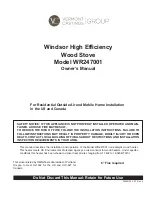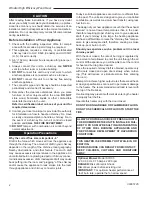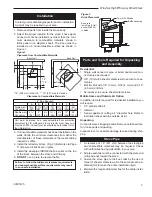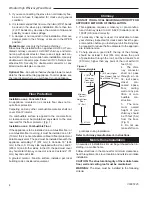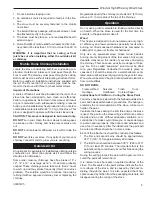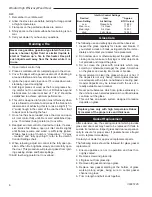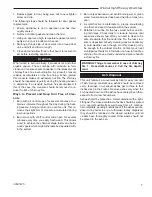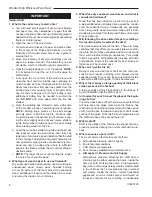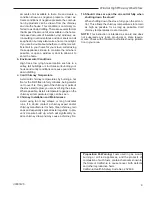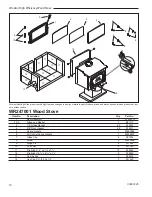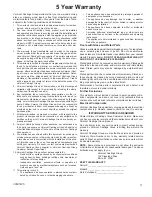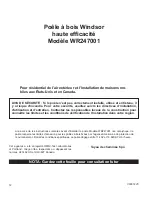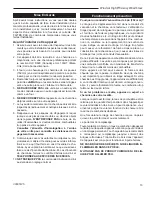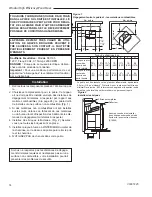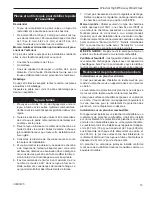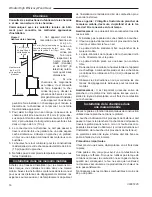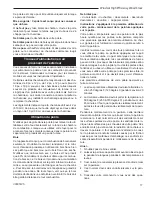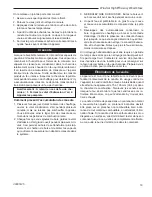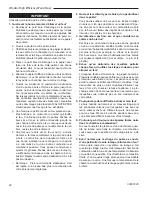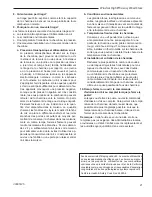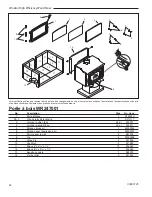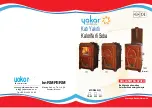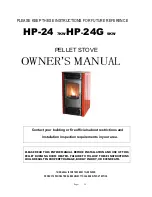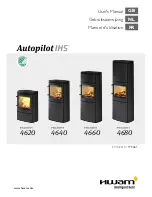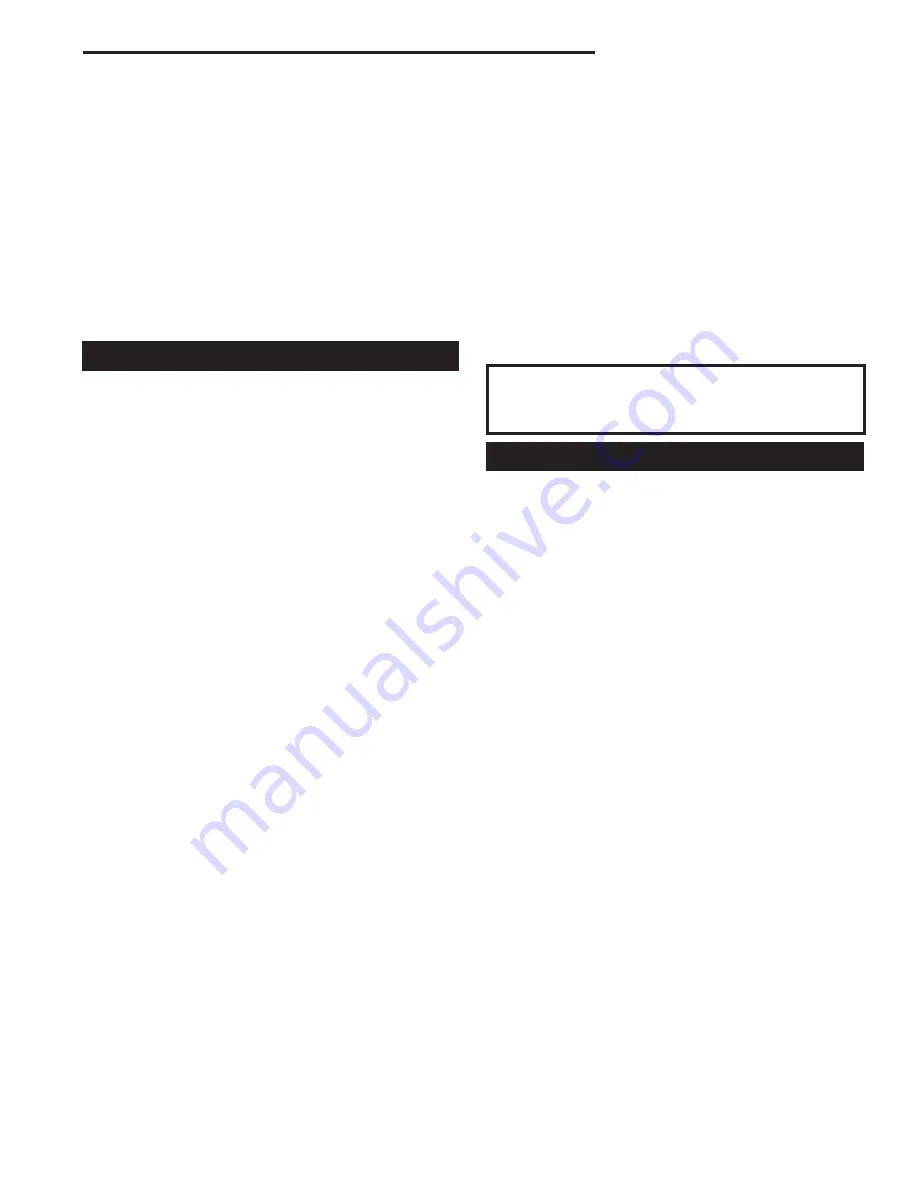
7
Windsor High Efficiency Wood Stove
30005125
7. Replace glass in door, being sure not to over-tighten
screw and clip.
The following steps should be followed for door gasket
replacement:
1. Ensure appliance is not in operation and has thor-
oughly cooled.
2. Remove old door gasket and clean channel.
3. Using an approved high temperature gasket cement,
apply a thin coat in bottom of channel.
4. Starting at hinge side of door, work into around door
unit, and butt and trim to length.
5. Close door and allow three to four hours for cement to
set before restarting appliance.
creosote
When wood is burned slowly, it produces tar and other
organic vapors. These combine with moisture to form
creosote. Creosote vapors condense in the relatively cool
chimney flue of a slow-burning fire. As a result, creosote
residue accumulates on the flue lining. When ignited,
this creosote makes an extremely hot fire. The chimney
should be inspected regularly during the heating season
to determine if a creosote build-up has accumulated. If
this is the case, the creosote should be removed to re-
duce the risk of chimney fire.
Ways to prevent and keep unit free of creo-
sote
1. Burn with air control open for several minutes at nu-
merous intervals throughout the day during the heat-
ing season, being careful not to over-fire unit. This re-
moves the slight film of creosote accumulated during
low burn periods.
2. Burn stove with draft control wide open for several
minutes every time you apply fresh wood. This allows
wood to achieve the charcoal stage faster and burns
wood vapors which might otherwise be deposited with-
in the system.
WaRNiNg: things to remember in case of chimney
fire: 1. close draft control. 2. call the fire depart-
ment.
ash disposal
This unit features a convenient ash lip for easy removal
of ash. During constant use, ashes should be removed
every few days, or whenever ashes get to three to four
inches deep in the firebox. Remove ashes only when the
fire has died down and the ashes have cooled. Even then,
expect to find a few hot embers.
Ashes should be placed in a metal container with a tight-
fitting lid. The closed container of ashes should be placed
on a noncombustible floor, well away from all combus-
tible materials, pending final disposal. If the ashes are dis-
posed of by burial in soil or otherwise locally dispersed,
they should be retained in the closed container until all
cinders have thoroughly cooled. Other waste should not
be placed in the ash can.
3. Burn only seasoned wood. Avoid burning wet or green
wood. Seasoned wood has been dried for at least one
year.
4. A small hot fire is preferable to a large smouldering
one that can deposit creosote within the system.
5. Establish a routine for the fuel, wood burner and fir-
ing technique. Check daily for creosote build-up until
experience shows how often you need to clean to be
safe. Be aware that the hotter the fire, the less creo-
sote is deposited. Weekly cleaning may be necessary
in mild weather even though monthly cleaning may
be enough in the coldest months. Contact your local
municipal authority for information on how to handle a
chimney fire. Have a clearly understood plan to handle
a chimney fire.

